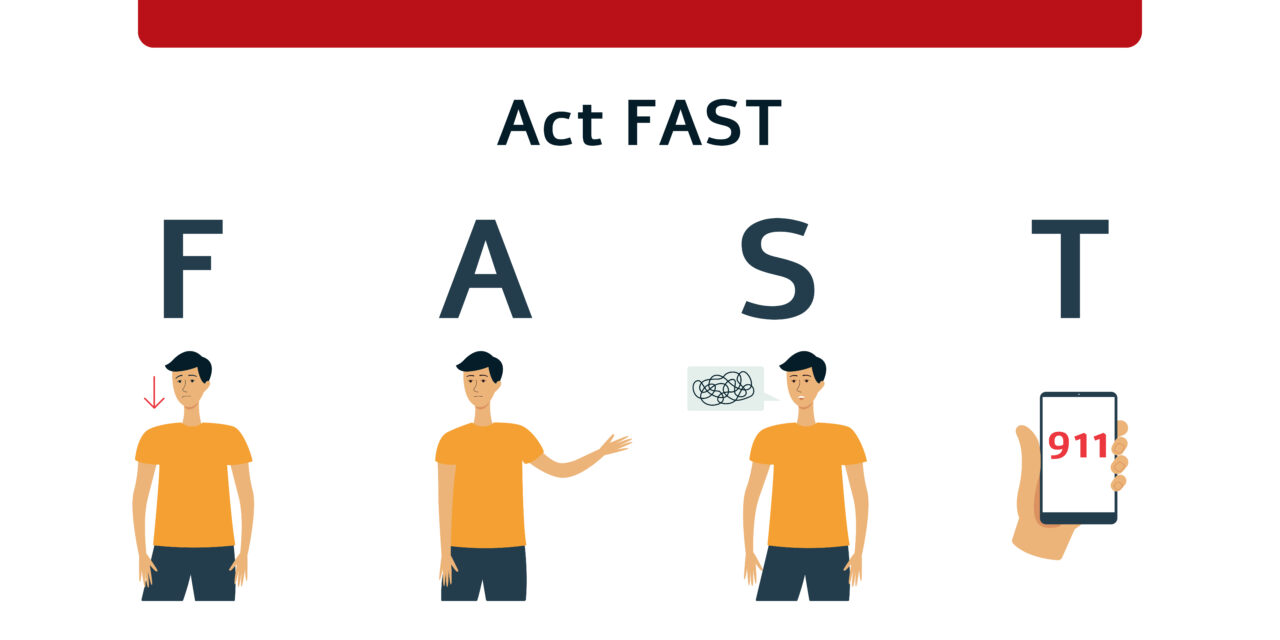Courtesy of the American Heart Association and the American Stroke Association
Stroke affects the arteries leading to and within the brain, and is the number 5 cause of death and a leading cause of disability in the United States. It occurs when a blood vessel carrying oxygen and nutrients to the brain is either blocked by a clot or bursts, preventing the brain from getting the blood and oxygen it needs, and causing brain cells to die.
Types of Stroke
Stroke can be caused by a clot obstructing the flow of blood to the brain (ischemic stroke) or by a ruptured blood vessel preventing blood flow to the brain (hemorrhagic stroke). A TIA (transient ischemic attack), or mini stroke is caused by a temporary clot.
- Ischemic strokes (clots) account for 87% of all strokes, and occur when a blood vessel supplying blood to the brain is obstructed. About one in three ischemic strokes are cryptogenic, and their cause is unknown. The incidence of cryptogenic stroke is two times higher in African Americans and 46% more likely in Hispanics. Possible hidden causes include irregular heartbeat, heart structure problems, hardening of the arteries, and a blood clotting disorder.
- Hemorrhagic strokes (bleeds) occur when a weakened blood vessel ruptures. The two types of weakened blood vessels that usually cause hemorrhagic stroke are aneurysms and arteriovenous malformations (AVMs). The most common cause of hemorrhagic stroke is uncontrolled high blood pressure.
- Brain stem strokes occur in the brain stem, and may affect both sides of the body, leaving someone in a ‘locked-in’ state, and generally unable to speak or move below the neck.
- TIA (transient ischemic attack), also called a mini stroke, is caused by a serious temporary clot. TIAs are warning signs of a stroke, and should be taken seriously, and require immediate medical attention.
Quick Stroke Treatment Can Save Lives
If you’re having a stroke, it’s critical that you get medical attention right away to help minimize the long-term effects and even prevent death. Thanks to recent advances, stroke treatments and survival rates have improved greatly over the last decade.
The only FDA-approved treatment for ischemic strokes is Alteplase IV r-tPA, also known as tissue plasminogen activator, which works by dissolving the clot and improving blood flow. If administered within three hours (and up to four-and-a-half hours in certain patients), the treatment may improve a person’s chances of recovery. Other stroke treatment options involve an endovascular procedure to remove the clot by sending a catheter to the site of the blocked blood vessel in the brain. Sometimes these procedures involve the tissue plasminogen activator being administered directly into the blood clot to help dissolve the blockage. In other procedures the doctor may attempt to remove the clot. Research is ongoing to determine the best clinical protocols for endovascular procedures.












